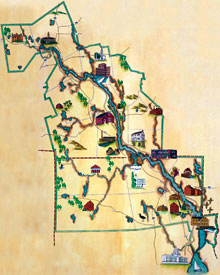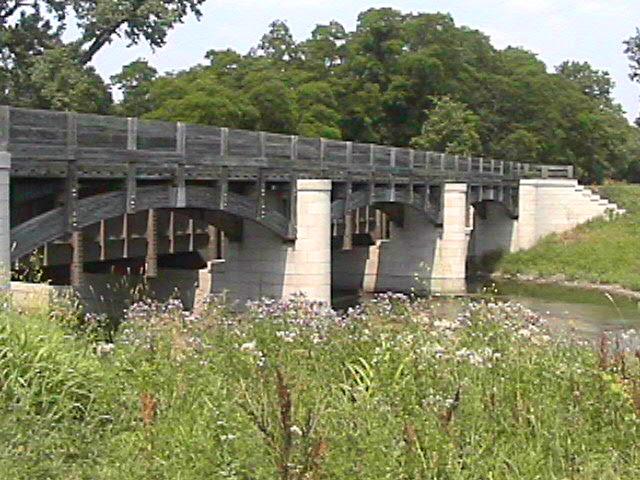To provide observations and information on the emerging fields of landscape scale conservation, heritage preservation, and sustainable community development.
Newsletter
Stay up-to-date with the latest nature, culture and community news.
We won’t spam you or share your information. Newsletters are sent approximately 10 times a year. Unsubscribe at any time.
1981 and 2017: What Can We Learn?
Flagging Sites of Universal Value
National Heritage Areas Receive Holiday and Anniversary Gifts
Congress wrapped up the 2014 session with two big Christmas tree bills with lots of presents for the National Heritage Areas (NHA). The first was the National Defense Authorization Act, which extended National Park funding for fifteen of the National Heritage Areas. Then a couple of days later along came the Omnibus Appropriations Bill for 2015, which increased funding for the program from the administration’s original 2015 request of $9.2 to $20.3 million dollars.

Special Update: Blackstone River Valley National Historical Park next step up for National Heritage Areas?
Interested in the future of the heritage movement? Concerned that the program has had to invest so much of its political capital on re-authorization and just hanging on to a flat line budget? Then the recent legislation establishing the Blackstone River Valley National Historical Park might be one way forward – offering stability and just possibly a new kind of partnership to conserve landscape scale resources.

Reading the Tea Leaves: What can we learn from Australia and Canada?
Do the recent midterm elections in the United States signal a change in the nation’s heritage policies? To read the tea leaves, we might look to the fate of parks and heritage conservation programs in Australia and Canada – where conservative governments have recently been in power. In the past, both countries had a track record of innovative heritage programs – developing world class historic sites, new approaches to the recognition of indigenous cultural values and strong interpretation of history and nature. So what has been the impact of the fiscal belt tightening of Prime Minister Tony Abbott of Australia and Prime Minister Stephen Harper of Canada?

National Heritage Areas at Thirty: Help tell the Story
2014 marks the 30th anniversary of the National Heritage Areas program. Conceived as a way to cross the culture – nature divide, heritage areas stretch beyond political boundaries to tell landscape scale histories and protect regional environmental resources. The areas tell stories that are too big, too gritty, too alive and too expensive to be confined within a traditional national park unit. Yet, heritage areas have been consistently hammered by shrinking federal budgets, questions about the proper role of government, and even their right to exist. Read more about how the LLO plans to mark this important anniversary.

National Conference Celebrates Innovative Large Landscapes Programs
At the recent National Workshop on Large Landscape Conservation, attendees took time to celebrate the anniversaries of two ground-breaking large landscape projects – National Heritage Areas and the Yellowstone to Yukon Conservation Initiative.
National Heritage Areas Receive Holiday and Anniversary Gifts
Congress wrapped up the 2014 session with two big Christmas tree bills with lots of presents for the National Heritage Areas (NHA). The first was the National Defense Authorization Act, which extended National Park funding for fifteen of the National Heritage Areas. Then a couple of days later along came the Omnibus Appropriations Bill for 2015, which increased funding for the program from the administration’s original 2015 request of $9.2 to $20.3 million dollars.

Special Update: Blackstone River Valley National Historical Park next step up for National Heritage Areas?
Interested in the future of the heritage movement? Concerned that the program has had to invest so much of its political capital on re-authorization and just hanging on to a flat line budget? Then the recent legislation establishing the Blackstone River Valley National Historical Park might be one way forward – offering stability and just possibly a new kind of partnership to conserve landscape scale resources.

Reading the Tea Leaves: What can we learn from Australia and Canada?
Do the recent midterm elections in the United States signal a change in the nation’s heritage policies? To read the tea leaves, we might look to the fate of parks and heritage conservation programs in Australia and Canada – where conservative governments have recently been in power. In the past, both countries had a track record of innovative heritage programs – developing world class historic sites, new approaches to the recognition of indigenous cultural values and strong interpretation of history and nature. So what has been the impact of the fiscal belt tightening of Prime Minister Tony Abbott of Australia and Prime Minister Stephen Harper of Canada?

National Heritage Areas at Thirty: Help tell the Story
2014 marks the 30th anniversary of the National Heritage Areas program. Conceived as a way to cross the culture – nature divide, heritage areas stretch beyond political boundaries to tell landscape scale histories and protect regional environmental resources. The areas tell stories that are too big, too gritty, too alive and too expensive to be confined within a traditional national park unit. Yet, heritage areas have been consistently hammered by shrinking federal budgets, questions about the proper role of government, and even their right to exist. Read more about how the LLO plans to mark this important anniversary.

National Conference Celebrates Innovative Large Landscapes Programs
At the recent National Workshop on Large Landscape Conservation, attendees took time to celebrate the anniversaries of two ground-breaking large landscape projects – National Heritage Areas and the Yellowstone to Yukon Conservation Initiative.


